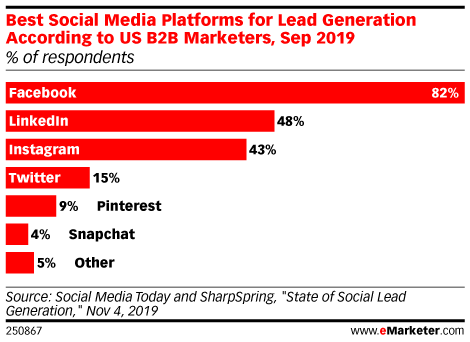“The digital transformation is over – please stop talking about it!”
This was the plea from Janet Schijns, CEO of JS Group, as she walked on the stage to present to a crowded room of business leaders at NextCon 2019. Janet went on to stress that while a booming economy has allowed for digital to become the norm, most businesses have fallen woefully behind.
Culturegraphics. Digital platforms. Snackable content. Social media influence. These are all terms business leaders should know well in today’s digital era, Janet argued. And yet, most don’t.
After her session, Janet sat down with us to share her take on the conference and just what precisely the “digital normal” means for businesses today.
Nextiva Studio: Interview with Janet Schijns

- What is Digital Transformation?
- Leverage the Digital Normal for a Better Customer Experience
- Stop Talking Digital Transformation and Start Doing
- Encourage & Retain Women in Technology
- Make Your Content ‘Snackable’
- Four Strategies to Achieve Digital Transformation
What is Digital Transformation? (Why Does It Matter?)
For the past decade, many bleeding-edge companies have made an effort to catch up to more modern business models. In practical terms, think of how Postmates uses digital over the likes of Papa John’s.
The urge to modernize business models and practices from the inside out has resulted in organizations seeking to undergo a digital transformation.
I won’t be the first to admit that digital transformation can be rather abstract to define. Even technology leaders like Dell struggle to define it succinctly.
Digital transformation includes all of these business processes:
- Using customer data to provide maximum value
- Digitizing the supply chains so inventories can be managed in real-time
- Leveraging digital tools to analyze and process complex information
- Re-tooling employees to work with business data in new ways
- Deploying artificial intelligence to unearth data from the enterprise

Digital transformation has been a phrase for the past five years. According to Google Trends, interest in it has taken off since mid-2015.
Let’s unpack why.
Digital transformations are proving more difficult to prove ROI because of the sheer size of the transformation—they’re always in progress. It’s less about new technology and more about an improved digital strategy.
Before we venture too far down, consider the research fresh from McKinsey & Company on digital transformation strategies. Primarily the key factors that led to success include implementing digital tools, offering self-serve technologies, and modifying internal procedures to use digital technologies.

No Industry Is Immune to Digital Transformation
It doesn’t matter what industry you’re in: retail, insurance, financial services, healthcare, or government—everyone is affected. What matters is that a digital normal now exists, and businesses need to take action now if they want to attract and retain their customers.
The City of Phoenix’s Public Works Department deployed a digital campaign to educate and inform residents about proposed changes to their trash and recycling services. While on the website, residents could submit questions and feedback through an online form.
This is one example of how digital transformation can accelerate an organization’s decision-making.
Related: 5 Incredible Examples of Successful Digital Transformation
Leverage the Digital Normal for a Better Customer Experience
“Here at NextCon, I can feel the dedication of the partners and how excited they are about NextOS!” Janet said that Nextiva has proven its understanding of the digital normal with the release of a fully integrated business communications platform.
Why the excitement?
Because customers today want to engage digitally. They want to do things with the single click of a button, and they expect the customer experience aligns with how digitally savvy they are.
At the same time, businesses need to be hyper-focused on their customers. Its VoIP phone system provides deep data and analytics to ensure companies can know their customers and respond well to them. “NextOS allows businesses to understand the customer journey using a digital lens,” Janet explained.
And that digital lens captures the entire customer journey on one powerful platform.
Think about the different platforms and apps you use today across your business. Even with the best of circumstances, crucial information about your customers is sprinkled across different applications, services, and even locations. Business phone system Sales pipeline CRM Customer service CRM Website chat Web & business analytics Team collaboration Text messaging Surveys Online faxing That’s a pretty exhaustive list, isn’t it?
The key objective behind NextOS is to fully serve the customer using one shared digital platform, not stitching several point solutions together. It’s no wonder Janet was excited to see NextivaONE!
Be aware that digital initiatives are more than a single task. Instead represent a roadmap to a successful digital transformation.
Related: 100+ Top Customer Service Statistics & Trends for 2023
Stop Talking Digital Transformation and Start Doing
“We don’t want to talk to you; we just want to engage with you on your platform.”
The average customer today would rather chat or send a text message than talk to someone over the phone. Digital transformation has already occurred – in today’s world, digital is now the norm.
What does this mean for businesses?
Invest more in your digital platforms. It doesn’t matter what your product is because today, “everybody is a web business,” Janet explained. Websites and social media platforms are digital properties that outpace (or, at the very least, complement) sales as the preferred way to win new customers.
Janet also explained the shift from demographics to culturegraphics, which can be defined as the tracking of consumer habits.
“Did you know that Target has more data scientists working on what products to buy than were used for the last rocket launch? Those great marketing offers are all customized and personalized. They know what you’re going to buy,” she explained.
“We live in a world where what you want to consume and who you interact with has nothing to do with the stale demographics and personas that have existed for decades,” Janet said.
Successful businesses know their customers, and they leverage digital platforms to do so.
Related: CRM Strategy: What Is It & Why You Need One Encourage & Retain Women in Technology When asked what she views as one of the biggest struggles in technology today, Janet answered, “keeping women in it!”
Women drop out of technology at three times the rate of men. She speculated it is because they don’t easily fit in and feel lonely. “It’s a tough industry, and women don’t typically have the support of their family encouraging them to stay in it. So yes, we have a funnel problem, but we also have a retention problem.”
Women in the tech industry make 29% less on average than their male counterparts, and only one out of four jobs is held by a woman in the industry.
To combat systemic inequality for women in tech, Janet co-founded a non-profit initiative called Tech World’s Half. The group provides women in technology with a place of community and encourages camaraderie to eradicate loneliness.
As your workforce reflects the diversity of your customers, you will find much less resistance to achieve true digital disruption. It’s not nice to have; it’s a successful business strategy.
Diversity and inclusion are vital. It’s well beyond market research. It needs to reach cross-functional teams so they can have a lasting impact across the company culture. Make Your Content ‘Snackable’

The top four social media platforms for B2B professionals today are Facebook, LinkedIn, Instagram, and Twitter. And yet, most businesses are getting left behind in effectively utilizing all four of them – or any of them.
“You need snackable and watchable content,” Janet said. In this digital age, customers are choosing to consume information via their social media platforms. Successful businesses recognize this and communicate across multiple platforms using social media suite.
Janet explained that you typically have to pay a lot of money for your written expertise to get out there, but very little for your video content. “Take advantage of this!” she said. YouTube is one of the most successful social media platforms available, and yet less than 4% of businesses within the partner community even have a YouTube channel.
Digital transformation could be as simple as demonstrating how your content is accessible on a smart speaker or IoT device. Or, it can be a business executive keynoting the launch of new products using a streaming platform like YouTube or Facebook Live.
Related: How to Approach Enterprise Digital Transformation in the Age of AI
Four Strategies to Achieve Digital Transformation
Rather than feeling overwhelmed, Janet outlined four steps for business leaders to complete their digital transformation and create a new normal.
No matter the size of your company, you can achieve a meaningful shift to a digital business with these steps.
1) Get serious about your Google search presence.
What keywords move the needle for your company? Have you conducted objective research into your visibility and performance? Does someone consistently track and improve their rankings?
Janet stressed that in the digital normal for every business, the company’s website should be the highest priority. Make sure you track the performance of your blog posts and landing pages.
2) Monitor and grow your website value.
Do you know it? If you are unable to quantify the real-world impact on the bottom line, you absolutely must do that now. As your business matures, your website should also appreciate in value. On a regular basis, familiarize yourself with your website conversion rate, traffic growth, and time on site. These are better indicators than simply traffic alone.
To know the value of your website from an investment perspective, experts in website valuation suggest applying a 20-50X multiple to a monthly net value from tools like Ahrefs.
3) Expand your social media influence.
Do you have followers? And are they the right kind of connections? “If 498 of your 500 followers are people who work with you, it has no impact on your business at all,” she said. Invest time in expanding your network via social media, and your brand will grow in influence. To do this, reach out and provide them with exciting digital content.
Don’t just publish the same stuff, either. Leverage the power of live content and leverage your close contacts to drive more awareness of your content. Instead of only directing people to a lead form, consider sponsoring your best content to pull more people closer to your brand.
4) Modernize your prospecting capabilities.
“What are your prospecting capabilities online? Can you name what was your most successful digital campaign of the past year?” Janet asked.
For example, in this age of digital normal, we now have the ability to track open rates. We can see who reads an SMS text. We should understand and be talking about how to control our brand based on these analytics. Every small business’ sales prospecting strategy should operate in tune with the market — not against it.
If you’re not experimenting with new lead sources, your competitors are. Aim to test every month for the sake of learning and discovery. Find one new digital lead source to find and attract new customers. As it proves out, shift your budget away from less profitable sources toward new ones to scale them throughout your company.
Related: Why Digitizing Your Customer Experience Is Non-Negotiable in 2024
Build & Execute Your Digital Transformation Strategy
Are you ready to make the changes to be successful? Shifting your business goals to support digital initiatives can be your firm’s competitive advantage.
“Move away from the old school world of how you went after customers and business into the new school world of a digital normal,” encouraged Janet.
You can do this. In this age of digital demand, there are ways to be successful, but they are no longer the same old ways.
Your company’s digital future is in your hands.
Related: Best Digital Transformation Companies & Their Key to Success

















 Business Communication
Business Communication 









